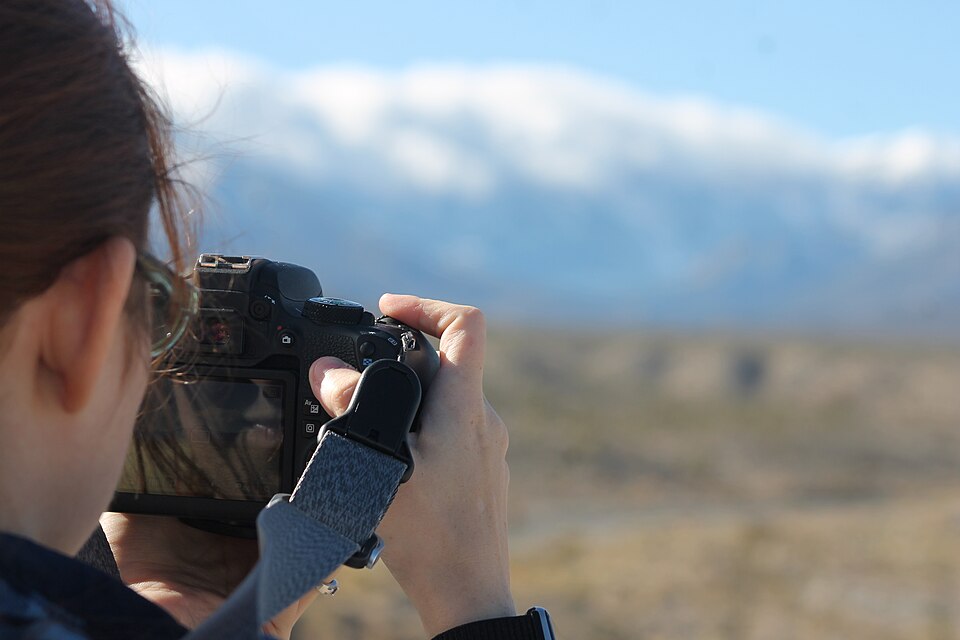
Photography emerged as part of a cluster of technical inventions and innovations around the middle of the nineteenth century. Hailed as a great technological invention, it immediately became the subject of debates concerning its aesthetic status and social uses.
A. Central to the nineteenth-century debate about the nature of photography as a new technology was the question as to how far it could be considered as art. It was celebrated for its putative ability to produce accurate images of what was in front of the camera's lens: images which were seen as being mechanically produced and thus free of the selective discriminations of the human eye and hand. On precisely the same grounds, the medium was often regarded as falling outside the realm of art as its assumed power of accurate, dispassionate recording appeared to leave no room for the artist's compositional creativity.
B. Debates concerning the status of photography as art continued to take place in periodicals throughout the nineteenth century. The French poet Baudelaire linked 'the invasion of photography and the great industrial madness of today' and asserted that if photography is allowed to deputise for art in some of art's activities, it will not be long before it has supplanted or corrupted art altogether. In his view, photography's only function was to support intellectual enquiry.
C. Baudelaire was not alone in this view. Absolute material accuracy was seen as the hallmark of photography, and the nineteenth-century desire to explore, record, and catalogue human experience, both at home and overseas, encouraged people to emphasise photography as a method of naturalistic documentation, rather than any type of art form.
D. Photographers responded to criticisms of this kind in two ways: either they accepted that photography was something different from art and sought to discover what the intrinsic properties of the medium were, or they pointed out that photography was more than a mechanical form of image-making, that it could be worked on and contrived so as to produce pictures which in some ways resembled paintings. 'Pictorial' photography from the 1850s onwards sought to overcome the problems of photography by careful arrangement of all the elements of the composition and by reducing the signifiers of technological production within the photograph. For example, they ensured that the image was somewhat blurred by more processing of allegorical subjects, including religious scenes, and those who worked with the gum bichromate process scratched their prints in an effort to imitate something of the appearance of a canvas.
E. In the other camp were those photographers who celebrated the qualities of straight photography (with an emphasis upon direct documentary typical of the Modern period in American photography) and did not want to treat the medium as a kind of monochrome painting. They were interested in photography's ability to provide apparently accurate records of the visual world and tried to give their images the formal status and finish of paintings while concentrating their attention on its intrinsic quality.
F. Photography in Britain and France was initially heralded for its technical recording abilities. With few exceptions, the emphasis was on picture-taking rather than picture-making—to echo a distinction made by Margaret Harker. She suggests that the development of the art of photography in the late 1850s can be partly accounted for through the increasing involvement of people trained as artists. They brought with them a concern for form and composition and, in particular, the use of light. Photography came to encroach very directly on genres of painting such as portraiture, not only taking over some of the work of painters, but also extending their work. For instance, while few could afford the time and cost of sitting for a painted portrait, the studio photographer could offer a similar service more cheaply. As such, portraiture became more democratically available. This did not prevent a continuing hierarchy: the painted portrait was still commissioned by the wealthy and the aristocracy. But it did allow a greater number of people the status of seeing themselves pictured.
G. Furthermore, photography provoked artists to re-examine the nature and potential of paint as a particular medium. Photography appeared to be more successful than painting in capturing likenesses. It had a sense of instantaneousness that painting lacked. It has been suggested that photography encouraged Impressionist painters to experiment with manners of painting which could also capture a sense of the moment, and the passage of light. It is a truism that photography released painting from its responsibility for literal depiction, allowing it to become more experimental. However, the developing relationship between the two was considerably more symbiotic.
H. Another respect in which photography may be said to have extended art was in its role as the re-presenter of art objects. It was no longer necessary to travel to Florence to see paintings of the Medici, or to Egypt to contemplate classical architecture or artefacts; you could visit an exhibition and view reproductions.